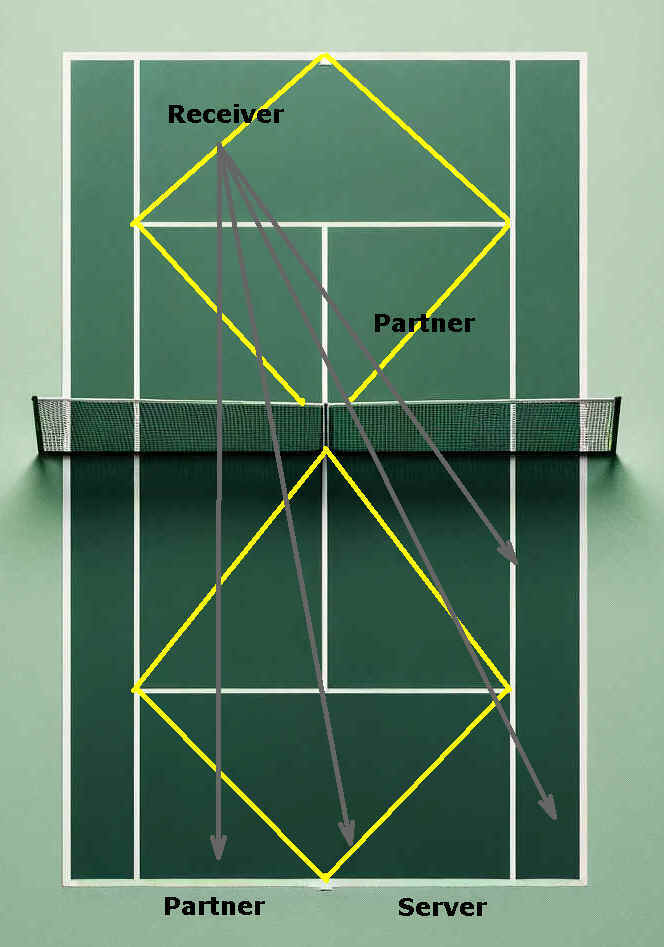Doubles Strategy: Serving Team on Baseline
On Saturday, an opposing team created an interesting challenge for our local team by using an unusual doubles formation: both players stood on the baseline when one was serving.
Here’s how you can counter this strategy and take full advantage to control the points right from the serve:
1. Take Control of the Net: Since both opponents are on the baseline, you and your partner can dominate the net, taking control of the middle of the court.
2. Receivers Partner Moves to St. Andrews Position: Your partner should immediately move into the threatening St. Andrews position, ready to intercept any shots and apply pressure.
3. Receiver’s Return Options:
– First Serve: Go for a deep return across the court. This helps to involve your partner and set up the point in your favor.
– Second Serve: Be creative. Target the weaker player, especially if they have a weak backhand. Hit a deep cross-court return to pull the server wide, or go for a short return to put pressure on them. Alternatively, hit straight down the line and follow it to the net.
4. Watch Out for Lobs: These baseline pairs often have a good lob. If your return is weak, be ready for your partner to get lobbed over. Stay calm, reset the point, and maintain your positions.
By using this strategy, you can turn this unusual formation into an advantage for your team and control the points from the outset.
Here’s the link on our strategy page.




